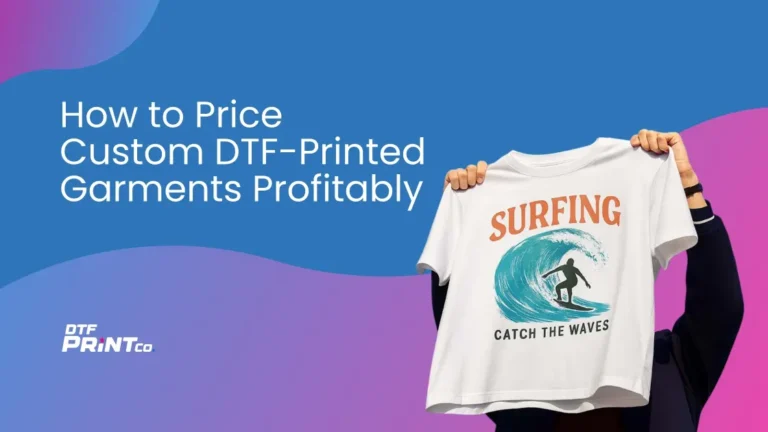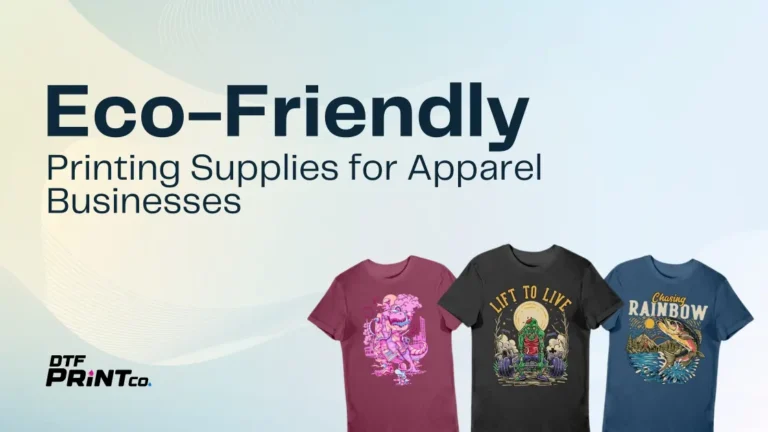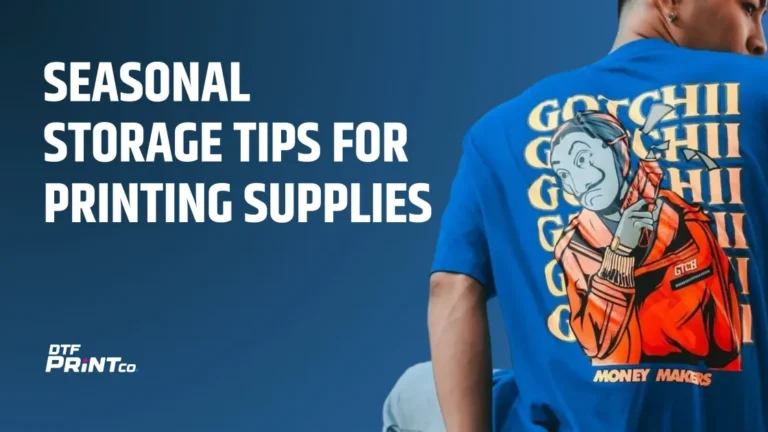Direct-to-Film (DTF) printing has become a game-changer for custom apparel makers, small businesses, and print shops. One of the key elements that determine print quality and durability is the type of DTF film used. Among the many choices, cold peel films stand out for their ease of use and professional results.
In this guide, you’ll learn what DTF cold peel films are, why they matter for printing success, and which options rank as the best in the market. Whether you’re new to DTF printing or upgrading your current setup, this article will help you make informed decisions backed by expert insights and real-world examples.
What is DTF Film for Cold Peel Transfers?
DTF film for cold peel transfers is a heat-resistant film used in the direct-to-film printing process, designed to release the printed design only after cooling down.
Unlike hot peel films, which require peeling immediately after pressing, cold peel films allow the design to set fully before removal. This ensures sharper edges, more vivid colors, and stronger adhesion on fabric.
Cold peel DTF films are especially valued for:
- Better durability – designs last longer even after many washes
- Improved detail – fine lines and small text transfer more clearly
- User-friendly workflow – no rush during peeling, reducing mistakes
For a deeper understanding of DTF printing, you can review this beginner-friendly guide on digital textile printing from FESPA, a global federation for screen and digital printing.
Why Cold Peel Films Matter in DTF Printing
Cold peel films are more than just a consumable item in the printing process—they directly influence the clarity, durability, and professional appearance of your finished product. For small businesses and established print shops alike, the right film choice ensures consistent results and fewer costly mistakes.
If you’re printing T-shirts, hoodies, tote bags, or even specialty items like aprons and caps, using a high-quality cold peel film can improve not only the look of your design but also its performance after repeated washes.
How Cold Peel Films Work
In DTF printing, the process begins by printing your design in reverse onto a PET film using specialized DTF inks. Next, a hot melt adhesive powder is applied, and the film is cured before being pressed onto fabric. The critical difference between hot peel and cold peel films comes after pressing:
- Hot Peel Films → Must be peeled immediately while hot, requiring speed and precision.
- Cold Peel Films → Must cool fully before peeling, giving the ink time to penetrate and bond with the fibers.
This cooling step leads to:
- Sharper details (small fonts and fine lines remain crisp)
- Stronger adhesion (less risk of peeling or cracking over time)
- Stress-free workflow (ideal for beginners since there’s no rush to peel quickly)
According to Textile World, cooling periods in transfer technologies are crucial for ensuring proper adhesion and fabric compatibility.
Key Features of the Best Cold Peel DTF Films
When comparing cold peel films, pay close attention to these important qualities:
- Thickness & Stability
- A film that is too thin may wrinkle under heat.
- A slightly thicker PET base (75–100 microns) ensures even transfers.
- Finish (Matte vs. Glossy)
- Matte films create a smooth, soft-hand finish and reduce glare.
- Glossy films enhance color saturation and make designs pop.
- Anti-Static Coating
- Prevents adhesive powder from scattering unevenly.
- Reduces common transfer defects like spots or graininess.
- Release Performance
- The film should peel cleanly without sticking or leaving residue.
- A smooth release also prevents ink lifting during removal.
- Compatibility with Printers & Inks
- Not all films work with every DTF printer or ink formulation.
- Always check whether your film matches your ink brand for best results.
Examples of Popular Cold Peel DTF Films
Here are some leading cold peel DTF films trusted in the industry:
- STS Inks Cold Peel DTF Film
Known for its matte finish and consistent release. Works well for apparel businesses focused on high-volume printing.
- Kodak Cold Peel Film
Backed by Kodak’s reputation, this film delivers vivid colors and long-lasting adhesion. Many small print shops report reduced misprints.
- Nano DTF Film
Features an anti-static layer that helps avoid powder clumping. A great choice for detailed logos and fine-line designs.
- Sublistar Cold Peel Film
Popular with bulk production setups because of its stable performance under continuous use. Especially effective for mass T-shirt production.
- Printomize Cold Peel Film
Offers a good balance of affordability and durability, making it suitable for startups and hobby printers.
Comparison Table: Cold Peel vs. Hot Peel
| Feature |
Cold Peel Film |
Hot Peel Film |
| Peeling Method |
Peel after cooling |
Peel immediately after pressing |
| Durability |
Higher (better wash resistance) |
Moderate |
| Detail Reproduction |
Excellent (small text, fine lines) |
Good but less precise |
| Ease of Use |
Beginner-friendly |
Requires skill & speed |
| Production Speed |
Slower due to cooling |
Faster turnaround |
Pro Tip: If you are just starting in DTF printing, cold peel films are safer and more forgiving. But if your business depends on fast production speed, hot peel films may still be worth considering.
How to Choose and Use the Best DTF Films for Cold Peel Transfers
Finding the right cold peel film requires more than looking at brand names. It involves understanding your production needs, fabric types, and workflow. Below are practical steps to help you select and use the best film for your business.
Step 1: Match Film to Fabric Type
Different fabrics respond differently to DTF transfers.
- Cotton and Blends: Most cold peel films perform well, but thicker films often give sharper results.
- Polyester and Performance Wear: Choose films with strong adhesion and anti-ghosting features to prevent shifting.
- Dark Garments: Films with glossy finishes enhance vibrancy on darker fabrics.
Step 2: Consider Your Print Volume
- Small-Scale or Hobby Use: Budget-friendly films like Printomize are cost-effective and easy to use.
- Mid-Scale Shops: Brands like Kodak or Nano provide consistent results for daily production.
- High-Volume Commercial Use: Industrial-grade options such as STS Inks and Sublistar deliver stability during bulk runs.
Step 3: Evaluate Film Finish
- Matte Films: Produce a natural look, preferred for fashion and casual wear.
- Glossy Films: Best for promotional or sports apparel where bold colors matter.
Step 4: Test Before Scaling
Always run test transfers before committing to large orders. Testing ensures that the film works with your ink, curing method, and chosen fabric.
Pros and Cons of Cold Peel Films
| Advantages |
Limitations |
| Strong adhesion and wash durability |
Slower production due to cooling |
| Crisp details and fine line accuracy |
Not ideal for urgent, same-day runs |
| Beginner-friendly peeling process |
Some brands cost more than hot peel |
| Reduced risk of peeling errors |
Requires workspace patience |
Real-Life Examples
- Small Print Shop Example: A startup in New York reported that switching from hot peel to cold peel films reduced their misprints by 30% and improved customer feedback on durability.
- Sportswear Brand Case: A regional team uniform supplier found that cold peel films, particularly Nano DTF, allowed logos with fine details to stay intact after more than 50 washes.
- Bulk Production Example: A factory in Los Angeles using Sublistar films scaled to 5,000 T-shirt transfers weekly without quality loss, proving cold peel films can support mass production.
Frequently Asked Questions
- What is the main difference between hot peel and cold peel DTF films?
Cold peel films require cooling before removal, giving stronger adhesion and cleaner details, while hot peel films are peeled immediately for faster production.
- Are cold peel DTF films better for beginners?
Yes. Cold peel films allow more time to work, reducing mistakes and improving results for those new to DTF printing.
- Can cold peel films be used on all fabrics?
Most fabrics, including cotton, polyester, and blends, work well. However, specialty materials may require testing.
- Do cold peel transfers last longer than hot peel transfers?
In general, yes. Cold peel films bond more firmly with fabric, leading to better wash durability.
- Which brands make the best cold peel DTF films?
Popular and reliable options include STS Inks, Kodak, Nano, Sublistar, and Printomize, each catering to different scales of production.
Final Thoughts
Choosing the best DTF films for cold peel transfers can transform the quality of your printing business. Cold peel films stand out for their durability, clarity, and user-friendly workflow, making them a top choice for both beginners and professionals. By allowing the transfer to cool before peeling, these films ensure sharper details and stronger adhesion compared to hot peel options.
For further reading on digital textile printing innovations, see Troubleshooting DTF Print Cracking: Causes And Fixes or Printing United Alliance resources. These sources provide valuable insights into new materials and best practices for print professionals.






